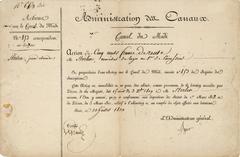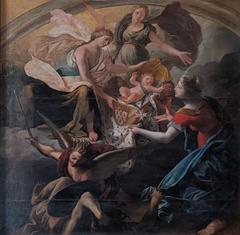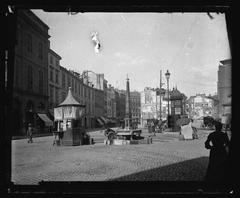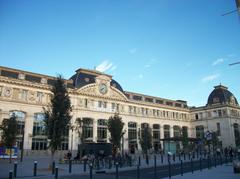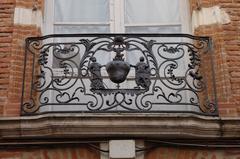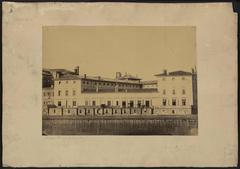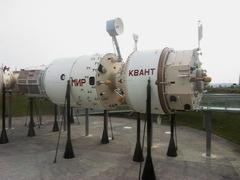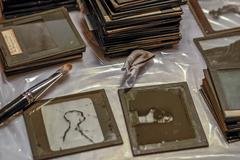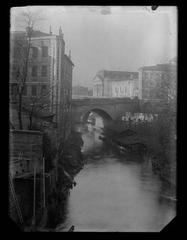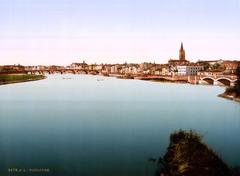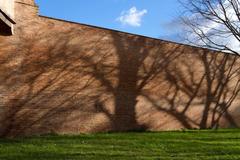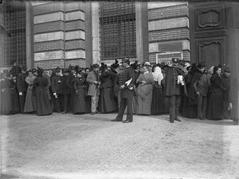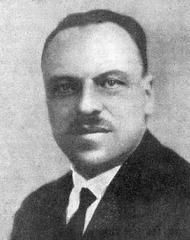Barrière-De-Paris Toulouse: Visiting Hours, Tickets, and Historical Sites Guide
Date: 04/07/2025
Introduction to Barrière-De-Paris, Toulouse
Barrière de Paris is a historic and vibrant gateway in the northern district of Toulouse, France. Once serving as a major city gate marking the northern limit on the road to Paris, this area has evolved from a toll collection point in the 18th and 19th centuries into a bustling hub characterized by dynamic urban transformation, rich cultural offerings, and extensive transportation links. Today, Barrière de Paris is not only a crucial transit node—serviced by Toulouse Metro Line B—but also a cultural landmark, renowned for public artworks like Bernar Venet’s monumental corten steel arcs and innovative venues such as Le Timbre.
This guide offers a comprehensive overview for both travelers and locals, detailing visiting hours, accessibility, ticketing options, and tips for navigating the neighborhood. Whether your interests lie in historical exploration, urban art, community events, or convenient access to the heart of Toulouse, Barrière de Paris provides a unique intersection of past and present.
Accessibility is a central feature of the district, with fully equipped metro stations, a robust public transit network, and pedestrian- and cyclist-friendly infrastructure. Amenities range from traditional markets and diverse dining options to green spaces and cultural venues, creating a welcoming atmosphere for all.
For real-time updates, ticket purchases, and guided experiences, the Audiala app is highly recommended. Dive into the rich layers of history, culture, and urban renewal that define Barrière de Paris, and discover why it remains an essential gateway to Toulouse’s northern districts. (La Dépêche, Metro Toulouse, Toulouse Tourism)
Table of Contents
- Introduction
- Origins and Historical Significance
- Urban Evolution: From City Gate to Vibrant Neighborhood
- Visiting Barrière de Paris: Practical Information
- Key Attractions and Cultural Highlights
- Transportation, Accessibility, and Local Amenities
- Visitor Tips and Frequently Asked Questions
- Summary and Recommendations
- Sources and Further Reading
Origins and Historical Significance
From City Gate to Urban Landmark
Barrière de Paris derives its name from the traditional city gate (“barrière”), historically serving as Toulouse’s northern entrance and a checkpoint for goods and travelers arriving from Paris. This location at the crossroads of avenues des Minimes and des États-Unis, and boulevards Pierre-Curie and Silvio-Trentin, has long been a pivotal node in the city’s development (La Dépêche).
The roundabout’s oval shape pays homage to Toulouse’s rugby culture and the nearby Stade Arnauné, symbolizing both a geographical and cultural transition from the historic city center to the northern suburbs.
Urban Evolution: From City Gate to Modern District
18th–19th Centuries: The Age of City Gates
Across France, monumental gates signified urban power and economic control. Paris’s renowned barrières, designed by Claude-Nicolas Ledoux in the 1780s, replaced earlier tollhouses and projected the monarchy’s authority (Academia.edu). Toulouse’s Barrière de Paris, while more modest, fulfilled a similar function as a key threshold.
20th Century: Urban Growth and Integration
The 20th century saw Toulouse expand northwards, driven by industrialization and residential development. Barrière de Paris transformed from a city gateway to a vibrant transit and commercial hub, reinforced by the construction of major boulevards and public transportation extensions (Metropole Toulouse).
21st Century: Renewal and Public Art
The opening of the Barrière de Paris metro station in 2007, designed by Séquences Architects, was a catalyst for area revitalization (La Dépêche). Bernar Venet’s 25-meter-high corten steel sculpture, installed at the roundabout in 2007, has become an emblem of the neighborhood’s modern identity and artistic integration.
Visiting Barrière de Paris: Practical Information
Visiting Hours and Access
- Metro Station: Open daily from approximately 5:15 AM to midnight (Line B schedule).
- Public Spaces: The roundabout, plazas, and outdoor art are accessible 24/7.
- Tickets: No entry fee for public spaces or art installations. Metro tickets can be purchased at station machines or via the Tisséo app (Tisséo).
Getting There
- Metro: Served by Line B; accessible entrances at multiple points.
- Bus: Lines 15, 29, 41, and 110, plus interurban routes.
- Cycling & Walking: Dedicated bike lanes and pedestrian paths connect the area to surrounding neighborhoods.
Accessibility
The station and public areas are fully accessible, with elevators at each metro entrance, step-free routes, tactile paving, and audio announcements for visually impaired travelers.
Key Attractions and Cultural Highlights
Bernar Venet’s Monumental Sculpture
A signature feature, the corten steel arcs at the roundabout are a must-see and a top photographic spot, especially at sunrise and sunset. This contemporary artwork is a symbol of the district’s artistic renewal (Metro Toulouse).
Le Timbre: Cultural “Third Place”
Le Timbre, opened in 2024 within a former postal center, is a pioneering arts and community venue, offering studios, event spaces, and workshops. It is a leading example of adaptive reuse and urban regeneration, slated to become student and social housing by 2026. Event hours vary; check official listings for details (La Dépêche).
Casino Barrière de Toulouse
Just a short metro ride away, the Casino Barrière de Toulouse features 340 slot machines, 19 gaming tables, restaurants, a 1,200-seat theater, and a five-star hotel. It’s open daily from 10:00 AM to 5:00 AM; entry fees apply for gaming areas (Toulouse Tourism).
Parc de la Vache
Located east of Barrière de Paris, this green park provides a relaxing space for picnics, community events, and nature walks.
Canal du Midi and Canal latéral à la Garonne
UNESCO-listed waterways ideal for walking and cycling, connecting the area to the wider network of Toulouse’s parks and heritage routes (France.fr).
Local Markets and Commerce
The district’s markets and shopping venues offer regional products and a taste of local life.
Transportation, Accessibility, and Local Amenities
Public Transportation
- Metro: Fully automated, frequent service, step-free access, and visual/audio information.
- Bus: Low-floor buses with real-time updates (notably lines 14 and 31).
- Tram: Direct connections to Toulouse-Blagnac Airport and park-and-ride services.
- Cycling: VélôToulouse bike rentals and dedicated lanes.
- Taxi/Ride-Sharing: Accessible vehicles available throughout the area.
Accessibility Standards
Toulouse is recognized as a “Destination for All,” featuring step-free transit, tactile guides, audio announcements, sign language support, and accessible accommodations (Toulouse Tourist Office).
Local Amenities
- Accommodation: A range of hotels and serviced apartments, many with accessibility features (Toulouse Tourist Office).
- Dining & Shopping: Traditional bakeries, weekly markets, and diverse dining options.
- Medical Services: Pharmacies and clinics nearby; emergency assistance via 112.
- Recreation: Accessible parks (e.g., Parc de la Maourine), sports centers, and pools.
Visitor Tips and Frequently Asked Questions (FAQ)
Top Tips
- Visit during daylight for the best experience and safety.
- On rugby match days, enjoy the lively local atmosphere.
- Use public transit to avoid parking challenges.
- Consult the Toulouse Métropole agenda for current events.
FAQs
Q: What are the visiting hours for Barrière de Paris Metro Station?
A: Daily from 5:15 AM to midnight.
Q: How can I buy metro tickets?
A: At station machines, online, or via Tisséo’s mobile app.
Q: Is the area accessible for wheelchair users?
A: Yes, all metro entrances have elevators and step-free access.
Q: Are there guided tours?
A: While no specific tours focus on Barrière de Paris, city tours often include the district.
Q: What are the best local attractions?
A: The Bernar Venet sculpture, Le Timbre, Casino Barrière, Canal du Midi, and the historic city center.
Summary and Recommendations
Barrière de Paris embodies the dynamic spirit of Toulouse, seamlessly blending its historic roots with contemporary culture and urban innovation. The integration of public art, modern transit, accessible amenities, and vibrant community life makes this district a microcosm of Toulouse’s broader appeal. Visitors will find the area both welcoming and engaging, whether drawn by its historical significance, cultural offerings, or simply its convenience as a transport hub.
For planning your visit, make use of the Audiala app and official tourism resources for up-to-date information on schedules, accessibility, and events. The neighborhood’s unique character, accessibility, and connectivity ensure a rewarding experience for travelers and locals alike.
Sources and Further Reading
- Barrière de Paris: History, Visiting Information, and Travel Tips for Toulouse’s Iconic Urban Gateway, 2025, La Dépêche
- Discover Barrière-de-Paris: Visiting Hours, History, and Cultural Highlights in Toulouse, 2025, Toulouse Tourism
- Barrière de Paris Metro Station and District: Visiting Hours, Tickets, and Toulouse Historical Sites Guide, 2025, Metro Toulouse
- Accessibility, Transportation, and Local Amenities in Barrière-De-Paris, Toulouse: Visiting Hours, Tickets, and Historical Sites Guide, 2025, Toulouse Tourist Office
- What to Do in Toulouse, 2025, France.fr
- Le Timbre à Toulouse: 8000 m2 for Artists and Associations in a Former Postal Center Transformed into a Third Place, 2025, La Dépêche
- Casino Barrière de Toulouse, 2025, Toulouse Tourism
- Claude Nicolas Ledoux and the Barrières de Paris, 2018, Academia.edu
- Toulouse Travel Tips, 2025, France Pocket Guide
For images, maps, and virtual tours, visit the official Toulouse tourism website.

